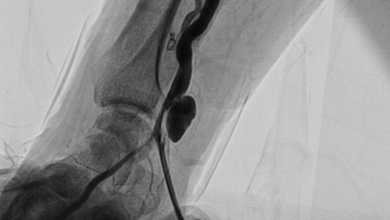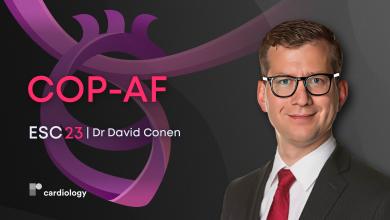Search results
Author(s):
Charles J Love
Added:
3 years ago
Lead extraction is now being recognized as but one lead management strategy. Lead management is a higher level of thinking in terms of how to manage patients with cardiac implantable electronic devices (CIEDs) that utilize wires (leads) to sense, pace, and/or defibrillate the heart. Although new leadless systems are beginning to appear, they are still in the investigational stage. Nonetheless,…
View more
Author(s):
Sara C Martinez
,
Sharonne N Hayes
Added:
3 years ago
Pregnancy is a physiologic challenge, with significant hormonal, metabolic, and hemodynamic changes. Cardiac output is objectively increased by the fifth week after the last menstrual period and continues to grow by approximately 45 % by 24 weeks in the normal, singleton pregnancy. This is facilitated by elevations in heart rate and stroke volume and a decrease in systemic vascular resistance…
View more
Author(s):
Tanawan Riangwiwat
,
James C Blankenship
Added:
3 years ago
Author(s):
Allen B King
,
Gary S Wolfe
Added:
3 years ago
Excess cardiovascular disease (CVD) with diabetes has been recognized for some time. Among diabetic individuals, CVD accounts for >50% of all deaths, and stroke accounts for an additional 15%.1 Diabetic women are at particularly high risk of CVD; diabetes eliminates the well-described female advantage for coronary disease mortality.2 This is alarming since the prevalence of type 2 diabetes is…
View more
Author(s):
Els Troost
,
Werner Budts
Added:
3 years ago
The prevalence of heart disease in pregnant women is estimated to be between 0.1 and 4%; although the prevalence has not changed for decades, the relative contribution of different types of heart disease varies according to the study population and the study period. Nowadays, in developed countries the largest group of females with an underlying heart disease consists of women with congenital…
View more
Author(s):
James C Blankenship
,
Tanawan Riangwiwat
,
Bill D Gogas
Added:
3 years ago
In this practice-focused presentation, Dr Tanawan Riangwiwat (Geisinger Medical Center, Danville, PA, US) talks about radial access, sheath selection and discusses vascular access complications of transradial access for cardiac catheterization that invasive cardiologist and cardiac catheterization team members should be aware of.
After the presentation, Dr Riangwiwat is joined by Dr James C…
View more
Author(s):
Steven V Manoukian
,
Michele D Voeltz
,
Frederick Feit
Added:
3 years ago
Non-ST-segment elevation (NSTE) acute coronary syndromes (ACS) include unstable angina (UA) and NSTE myocardial infarction (NSTEMI), and account for one and a half million hospitalisations in the US annually. Patients with ACS are typically managed by initial medical stabilisation followed by an early invasive approach, whereby cardiac catheterisation is performed, usually within 24 hours of…
View more
The Impact of Haemorrhagic Complications on Mortality in Acute Coronary Syndromes—Implications for…
Author(s):
Steven V Manoukian
,
Michele D Voeltz
,
Frederick Feit
Added:
3 years ago
Article
ESC 23: COP-AF Trial
Author(s):
David Conen
Added:
7 months ago
Video
Author(s):
David E Allie
,
Chris J Herbert
,
Craig M Walker
Added:
3 years ago
Despite the recent introduction of vascular closure device (VCD) technology, vascular access site complications remain the leading source of morbidity and costs after the approximately eight to eight-and-a-half million percutaneous catheter-based procedures performed annually worldwide.1 VCD trials consistently demonstrate increased patient satisfaction, early ambulation, and decreased hospital…
View more













